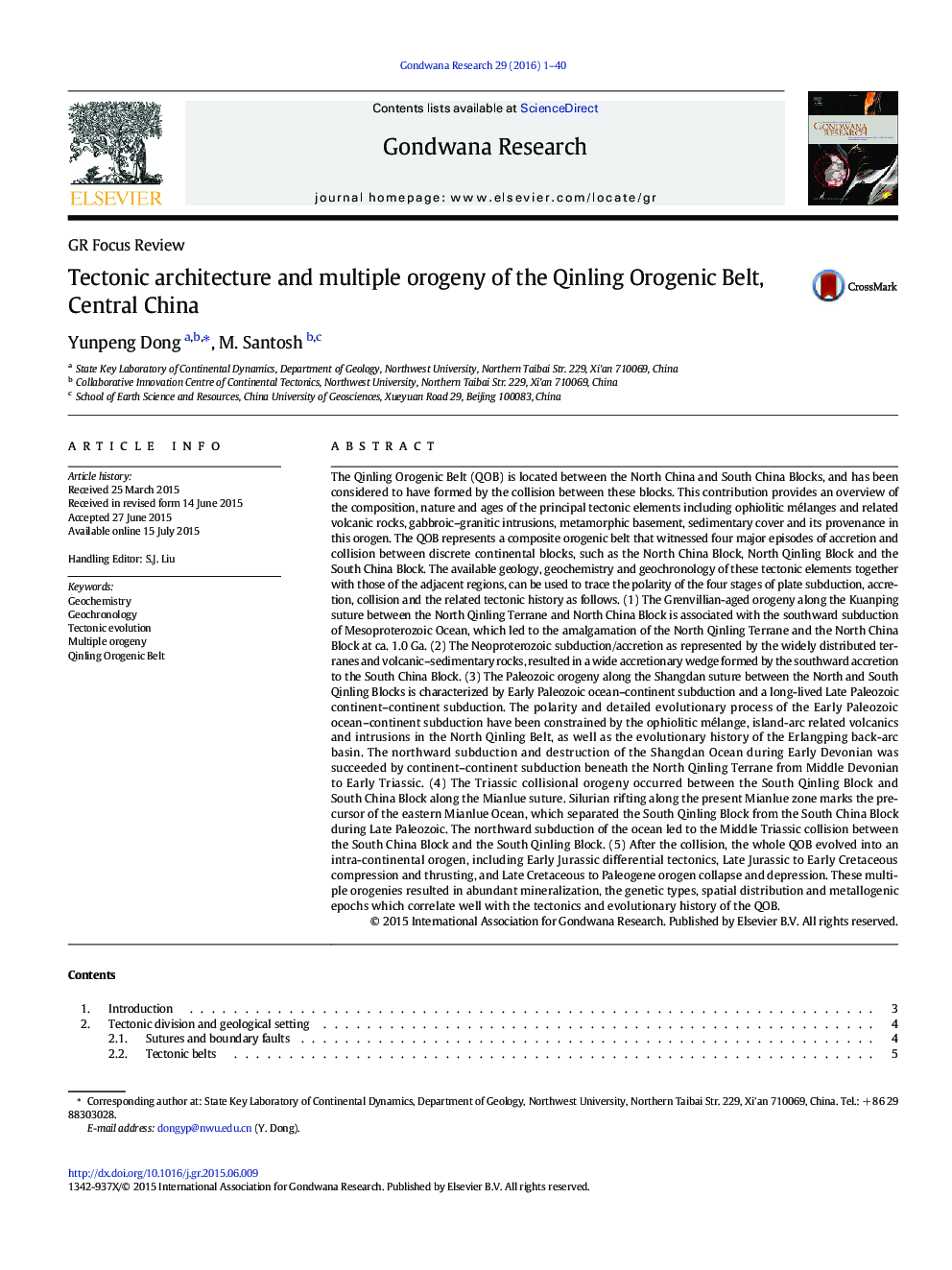| کد مقاله | کد نشریه | سال انتشار | مقاله انگلیسی | نسخه تمام متن |
|---|---|---|---|---|
| 4726770 | 1356346 | 2016 | 40 صفحه PDF | دانلود رایگان |
• Qinling orogen formed by four episodes of accretion–collision between discrete blocks
• Grenvillian orogeny along Kuanping suture between North Qinling and North China
• South Qinling represents southward Neoproterozoic subduction/accretion wedge.
• Two-stage subduction between the NQB and SQB occurred during Palaeozoic.
• Triassic collisional orogeny between SQB and SCB took place along the Mianlue suture.
The Qinling Orogenic Belt (QOB) is located between the North China and South China Blocks, and has been considered to have formed by the collision between these blocks. This contribution provides an overview of the composition, nature and ages of the principal tectonic elements including ophiolitic mélanges and related volcanic rocks, gabbroic–granitic intrusions, metamorphic basement, sedimentary cover and its provenance in this orogen. The QOB represents a composite orogenic belt that witnessed four major episodes of accretion and collision between discrete continental blocks, such as the North China Block, North Qinling Block and the South China Block. The available geology, geochemistry and geochronology of these tectonic elements together with those of the adjacent regions, can be used to trace the polarity of the four stages of plate subduction, accretion, collision and the related tectonic history as follows. (1) The Grenvillian-aged orogeny along the Kuanping suture between the North Qinling Terrane and North China Block is associated with the southward subduction of Mesoproterozoic Ocean, which led to the amalgamation of the North Qinling Terrane and the North China Block at ca. 1.0 Ga. (2) The Neoproterozoic subduction/accretion as represented by the widely distributed terranes and volcanic–sedimentary rocks, resulted in a wide accretionary wedge formed by the southward accretion to the South China Block. (3) The Paleozoic orogeny along the Shangdan suture between the North and South Qinling Blocks is characterized by Early Paleozoic ocean–continent subduction and a long-lived Late Paleozoic continent–continent subduction. The polarity and detailed evolutionary process of the Early Paleozoic ocean–continent subduction have been constrained by the ophiolitic mélange, island-arc related volcanics and intrusions in the North Qinling Belt, as well as the evolutionary history of the Erlangping back-arc basin. The northward subduction and destruction of the Shangdan Ocean during Early Devonian was succeeded by continent–continent subduction beneath the North Qinling Terrane from Middle Devonian to Early Triassic. (4) The Triassic collisional orogeny occurred between the South Qinling Block and South China Block along the Mianlue suture. Silurian rifting along the present Mianlue zone marks the precursor of the eastern Mianlue Ocean, which separated the South Qinling Block from the South China Block during Late Paleozoic. The northward subduction of the ocean led to the Middle Triassic collision between the South China Block and the South Qinling Block. (5) After the collision, the whole QOB evolved into an intra-continental orogen, including Early Jurassic differential tectonics, Late Jurassic to Early Cretaceous compression and thrusting, and Late Cretaceous to Paleogene orogen collapse and depression. These multiple orogenies resulted in abundant mineralization, the genetic types, spatial distribution and metallogenic epochs which correlate well with the tectonics and evolutionary history of the QOB.
Figure optionsDownload as PowerPoint slide
Journal: Gondwana Research - Volume 29, Issue 1, January 2016, Pages 1–40
